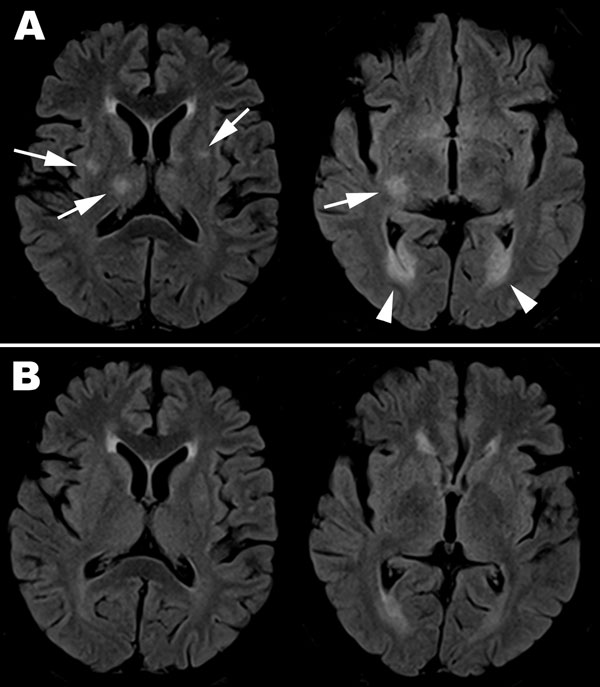Volume 17, Number 10—October 2011
Dispatch
Pandemic (H1N1) 2009 Encephalitis in Woman, Taiwan
Figure

Figure. Magnetic resonance imaging with fluid-attenuated inversion recovery sequence of brain for adult patient with pandemic (H1N1) 2009 encephalitis, Taiwan. A) On day 9 after symptom onset, scattered asymmetric focal hyper signal intensities over bilateral putamen and right thalamus (arrow on the left image) and ventriculitis over bilateral occipital horns (arrow head over right image) are seen. B) By day 24, the lesions had resolved.
Page created: September 26, 2011
Page updated: September 26, 2011
Page reviewed: September 26, 2011
The conclusions, findings, and opinions expressed by authors contributing to this journal do not necessarily reflect the official position of the U.S. Department of Health and Human Services, the Public Health Service, the Centers for Disease Control and Prevention, or the authors' affiliated institutions. Use of trade names is for identification only and does not imply endorsement by any of the groups named above.